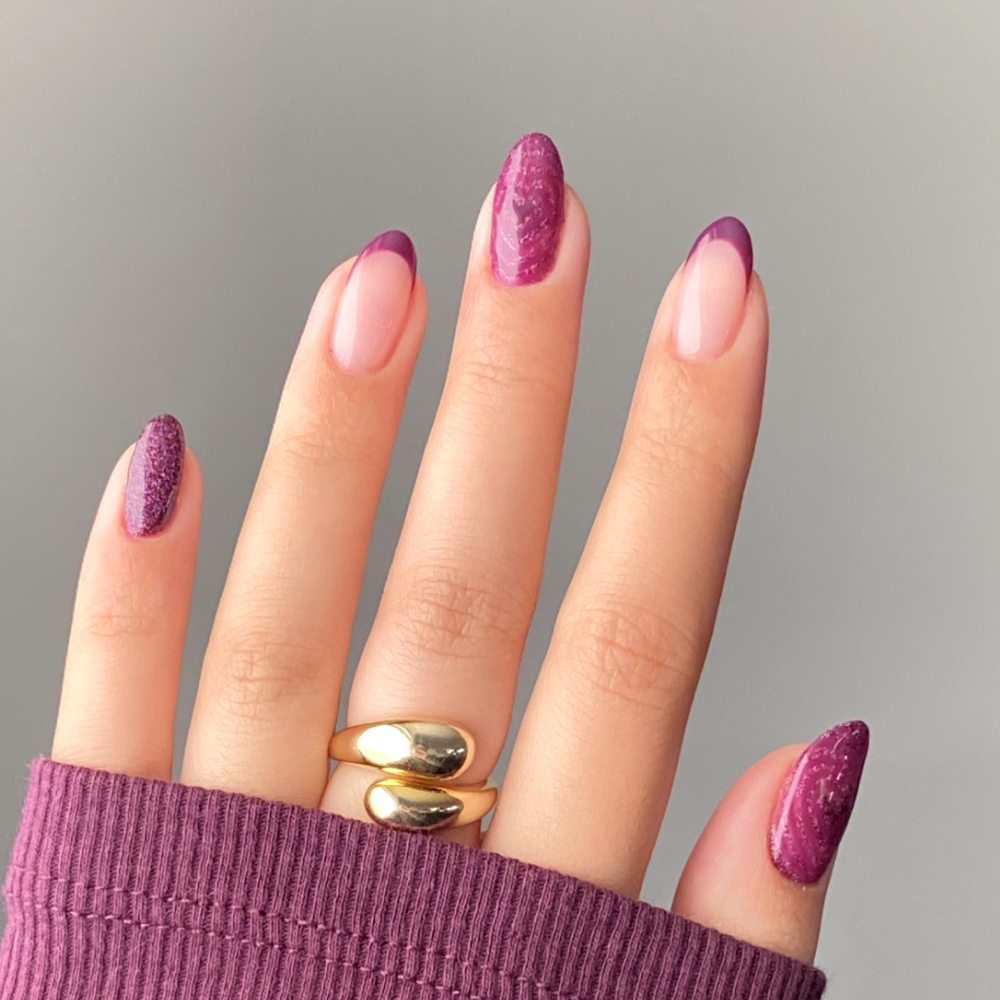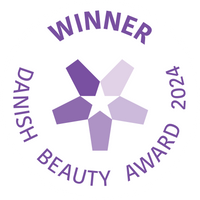Our effort to reduce the risk of allergies

At this time, there are no UV-cured nail products on the market that are free from allergy risk. This is because the main ingredient in any UV-cured nail product is acrylates - an ingredient that can trigger allergic reactions in some people. However, it is important to remember that not all nail products are the same. The risk of allergy can vary greatly depending on the type of acrylate, the concentration of the acrylate, and how the product is used. This means that there is a difference depending on the brand you choose.
Our efforts to ensure a strong focus on safety include:
-
Selection of acrylates:
We carefully select acrylates with the lowest risk of allergy, by prioritizing large molecules, which are less likely to penetrate the skin.
-
Lowest possible acrylate concentration:
We strive for the lowest possible acrylate concentration to minimize exposure and thereby the risk of allergy.
-
Effective curing process:
We ensure that our products and UV lamps are carefully matched to guarantee complete curing, which is crucial to reduce the risk of allergy.
-
Customer education:
A key part of our safety efforts is to educate our customers on the correct use of the products through comprehensive theory books, video guides, and direct support.
-
Transparent communication:
We are committed to informing about the ingredients and potential risks, supported by labeling and in-depth educational materials.
To provide a deeper understanding of our dedication to product safety, you can read more here about the scientific principles behind the development of our products. It is essential to understand how we proactively address potential allergy risks through our product design and customer education:
Scientific principles
Our products are designed with a deep understanding of the molecular interactions that occur during the curing process. UV-cured gel products consist of small molecules that polymerize (harden) when exposed to UV light. The size of the molecules is crucial to their ability to penetrate the skin and potentially trigger an allergic reaction. By selecting acrylates with larger molecular sizes, we reduce the risk of allergy, as larger molecules are less able to penetrate the skin barrier.
In addition to working on selecting acrylates, we also work purposefully to minimize the concentration of acrylates in our products. A lower concentration of acrylate means less exposure for the consumer, and thus a reduced risk of developing an allergy.
Another central part of our product safety is ensuring that the curing process is fully effective. Incompletely cured products can increase the risk of allergy, as the uncured molecules are small enough to penetrate the skin. By carefully adjusting our gel products and UV lamps, we ensure that the curing is complete, which reduces the risk of allergy. A fundamental understanding of the chemistry behind the curing process is crucial to ensuring this. All gel products contain photoinitiators that initiate the curing process when exposed to UV light. However, when diving deeper into the chemistry, one discovers that not all types of UV light can cure all types of gels, as different types of photoinitiators require specific UV wavelengths and power levels. These photoinitiators are critical for the curing process to be correctly initiated. Without a UV lamp that precisely matches the gel product’s wavelength and power needs, the product may not fully cure. This leaves small molecules that are not fully cured, which over time can be absorbed by the skin. Therefore, an exact match between the UV lamp and the gel product is essential to minimize the risk of allergy.
This detailed and perhaps technically heavy explanation emphasizes our commitment to minimizing the risk of allergies through careful design and informed use of our products.
Finally, we believe it is important for everyone to remember that a comprehensive system within the EU continuously evaluates the ingredients in cosmetic products. So far, the EU has chosen not to implement restrictions on all types of acrylates, but only on certain specific types, such as Hema. Naturally, we assure that The Gel Collection always complies with applicable EU regulations and continuously keeps up to date with the latest knowledge in our field.
What is the risk of developing an allergy?
The risk of allergic reactions when using nail products is generally very low, especially when the products are used according to the provided instructions. Factors contributing to the development of contact allergies can be broadly categorized into three main groups: product-related, environmental, and genetic.
Product-related factors include the potential for allergy triggered by the ingredients in the nail products, including the type and concentration of allergens. Environmental factors refer to the degree to which an individual is exposed to additional allergens or skin irritants in their daily environment. Genetic factors involve a personal or family history of eczema (such as atopic eczema) or other forms of allergies.
The condition of the skin can actually also play a role in allergy risk. Damaged or irritated skin, caused by external factors such as climate or frequent use of hand sanitizers, may be more susceptible to allergens because the skin barrier is compromised. Therefore, we always recommend caring for your hands and skin to keep them healthy and strong.
The overall risk of developing contact allergies results from the interaction between these factors and varies significantly from person to person, making it difficult to predict specific allergic reactions.
What can you do to avoid an allergy?
To reduce the risk of allergy when using UV-cured nail products, it is essential to understand some basic scientific principles and take proactive steps. Here are some measures you can take:
Choose your brand carefully: Not all nail products are created equal. Different brands have different formulations, and some are more focused on minimizing allergy risk than others. At The Gel Collection, we prioritize safety by carefully selecting acrylates, controlling their concentration, and providing guidance on proper use.
Ensure complete curing of the product: Liquid nail products can pose a risk of allergy, but when properly cured, they become harmless. Complete curing transforms the product into a solid form that cannot penetrate the skin. It is crucial to ensure that the product cures fully to avoid exposure to allergenic molecules.
Avoid liquid product on the skin: To prevent allergic reactions, it is important to avoid direct contact between liquid nail products and the skin. If the product gets on the skin, it should be removed quickly using a suitable method, such as a rosewood stick or cleaning sticks saturated with a specific cleaner.
Follow the product's instructions carefully: All cosmetic products, including nail products, undergo a safety assessment in accordance with EU law. This assessment is based on the assumption that the products are used according to the given instructions. Deviating from these instructions risks exposing yourself to allergens beyond the level considered safe.
Stick to one brand: By using products from one brand, you ensure that they are designed to work together, which can minimize the risk of allergic reactions. This also ensures that you follow a consistent approach that is deemed safe.
By taking these steps, you can help protect yourself from potential allergies caused by UV-cured nail products. It is important to remember that while the risk of allergy is generally low, a combination of product choice, correct application, and personal precautions plays a key role in further reducing this risk.


